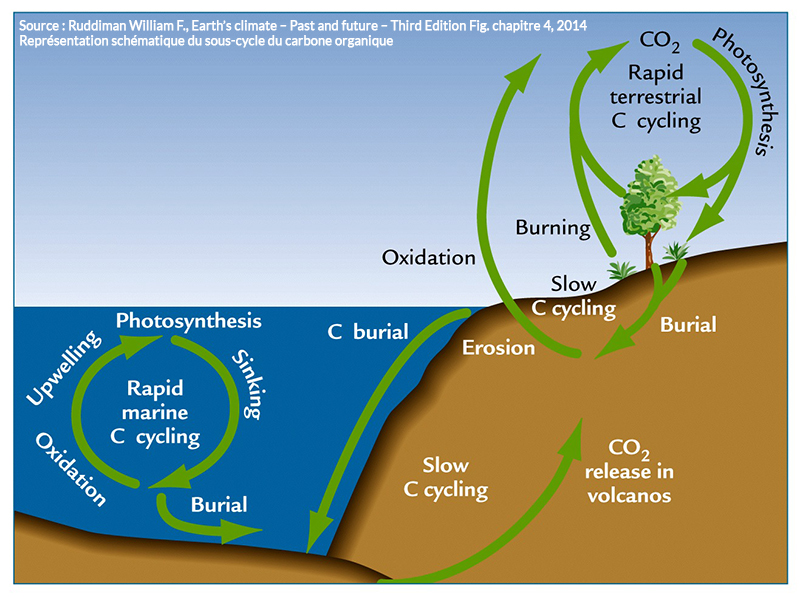BIOlogical Productivity changes and their leverage on the Carbon and Oxygen cycles during the last Deglaciations
Funding
INSU-LEFE-IMAGO 2019 (2019-2022)
Project leader
S. Duchamp-Alphonse (GEOPS) and A. Landais (LSCE)
Collaborations
M. Brandon (GEOPS/LSCE), M. Kageyama (LSCE), L. Bopp (LMD), E. Michel (LSCE), D. Roche (LSCE), G. Siani (GEOPS), F. Prié (LSCE), T. Extier (LSCE), T. Blunier (Université de Copenhague) et F. Manssouri (LSCE).
Since the 1950s, increasing CO2 emissions have amplified the natural greenhouse effect of the Earth, which is evident in a decrease in ice cover, a rise in sea level and the recurrence of extreme meteorological and climatic events, all of which have considerable consequences for natural and human systems. The important roles played by ocean circulation (particularly in the Southern Ocean) and biospheric productivity in variations of atmospheric pCO2 have been clearly identified. However, the processes that led to these variations and the impacts on the ecosystem since the industrial revolution, and also in pre-anthropic contexts, remain poorly understood. This fact limits our understanding of the climatic system of the future.
More particularly, over the past 800 ka, while an important part of the increases of atmospheric pCO2 recorded during the deglaciations can be attributed to the reinvigoration of austral upwelling which favours the degassing of CO2 from the deep ocean reservoir to the atmosphere, the scale of the changes in pCO2 is also a function of biological productivity, the past dynamics of which are still poorly understood.
The aim of this project is to more accurately quantify the changes in biological productivity and their impacts on the carbon- (C) and oxygen (O) cycles during the Quaternary deglaciations, by combining the expertise of several laboratories in the Isle de France (GEOPS, LSCE, LMD) in order to couple new, complementary empirical approaches with global climate modelling experiments. Specifically, measurements of the ∆17O composition of the EDC core, retrieved from the Antarctic, will allow us to quantify global photosynthetic oxygen for the past 800 ka. The calibration of the BrXRF/CaXRF signal of a Southern Ocean sedimentary core in terms of exported COT/CaCO3, through a micropaleontological and geochemical approach, will allow us to quantify changes in the efficiency of the biological pump in a key region for CO2 exchanges between the ocean and the atmosphere over this time period. The use of the outputs from oceanic bio-geochemistry and vegetation models will facilitate comparisons of the empirical results.


